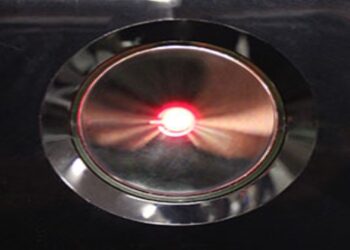Frame Rates Throwdown: Decoding FPS on Your Favorite Retro Consoles (and Why GameCube Might Surprise You)
Ever wondered why some games feel like butter while others seem like a slideshow? The answer is frame rate, or FPS. It’s the count of still images your console shows every second. Think of flipping a picture book fast. More pictures equal smoother animation.
Consoles, old and new, reveal a unique frame rate path. Let’s explore the FPS differences across various systems. We’ll focus on the often-overlooked GameCube.
GameCube: The 60FPS Hero You Didn’t Expect?
The GameCube, Nintendo’s quirky purple console, often gets grouped with its 30FPS peers. Here’s a secret: it excelled at 60FPS. Actually, 60FPS was often the norm for GameCube titles.
This is significant. Back then, especially with 3D gaming rising, hitting 60 frames per second was tough. Many early 3D games ran at 30FPS due to power demands. The GameCube, however, often delivered that sweet 60FPS experience.
If you played in PAL regions, don’t worry! Older consoles often limited PAL games to 50FPS. The GameCube, however, frequently ran games at smooth 60FPS. You can check out more about the GameCube’s specs on Wikipedia or look into the official Nintendo UK hardware page.
A Blast from the Past: FPS on Retro Consoles
Now, let’s stroll through history and examine the frame rates of other consoles, shall we?
SNES: The 60FPS Illusionist (Mostly)
The SNES was a 16-bit marvel. Some might chuckle thinking it hit 60FPS, yet many games did aim for that. But there’s a catch. The
N64: The 20FPS Club (with exceptions)
The Nintendo 64, arriving in the 64-bit era, had its own frame rate reality check. Many games capped at a meek 20 frames per second. Yes, you read that correctly: 20FPS. It’s not smooth by today’s standards. Yet, gems like
Game Boy: Surprisingly Smooth for its Era
The humble Game Boy, that brick-like handheld, started it all. You may be shocked to find it ran at approximately 59.7 FPS. Not bad for a monochrome marvel, right?
PlayStation 1 (PS1): A Mixed Bag
Sony’s PlayStation 1 aimed at the 30FPS mark. Some games, mainly in NTSC regions, managed to hit 60FPS. But PAL regions often faced 25 to 50FPS. Thus, the PS1 frame rate experience? Quite variable.
PlayStation 2 (PS2): 60FPS Powerhouse
The PlayStation 2? Now we’re talking. The PS2 was designed to run games at 60FPS quite easily. Smoothness became much more attainable.
PlayStation 3 (PS3): 30FPS Standard, 60FPS Sprinkles
The PS3 age returned to the 30FPS standard. Most PS3 titles clocked in at 30FPS, but some multiplayer-focused games aimed for 60FPS for better online responsiveness.
PlayStation 4 (PS4): Pro to the Rescue
The PS4 split the scene. The original PS4 and Slim generally capped at 30FPS. To experience that 60FPS bliss, you needed the PS4 Pro, which could reach that in select titles.
Xbox One: 30 or 60, Take Your Pick
The Xbox One mirrored the PS4’s situation. Many games were fixed at 30FPS on the standard Xbox One, but some offered a choice for 60FPS, depending on the game.
Xbox Series X|S: Welcome to the High-Frame Rate Future
Now we enter Xbox Series X and S. These consoles are flexing their muscles. Expect frame rates up to 120FPS in supported titles! Thanks to the Xbox Velocity Architecture, enjoy faster loading and seamless experiences.
Wii: Surprisingly Good Looking at 60FPS
Back to Nintendo! The Wii had both 30FPS and 60FPS games. Interestingly, some visually captivating titles ran at 60FPS, showing that beauty and smoothness can go hand in hand.
NES & Sega Genesis: Retro 60FPS Champions
Let’s not forget gaming’s grandaddies! The NES and Sega Genesis (Mega Drive) surprisingly hit 60FPS frequently. The NES? Yep, easily 60FPS. The Sega Genesis pushed sprites smoothly at this rate as well. They were champions of smooth gameplay.
Mario’s Frame Rate Adventures
Now, let’s focus on Mario and his frame rate tales.
Mario 64: A 30FPS (Mostly) Classic
Mario Kart 8 Deluxe: 60FPS Karting Bliss
Super Mario Bros. 3: 60FPS (Except for PAL)
FPS Demystified: A Quick Explainer
Let’s clarify FPS basics quickly.
What is FPS Anyway?
Simply put, FPS is how many frames your screen shows per second. Higher FPS usually means smoother visuals. Good high frame rate (HFR) films at (48+fps) can seem slightly quicker due to more unique frames presented to your eyes.
Human Eye and FPS: The Great Debate
How much FPS can humans perceive? Experts agree it hovers between 30 and 60 FPS. Beyond that, improved smoothness becomes less dramatic for most.
60FPS and Beyond: High-Speed Territory
A frame rate above 60FPS is high-speed. Games begin to feel very responsive and smooth at this threshold.
Why Lock Frame Rates? Consistency is Key
Game developers lock frame rates to maintain a steady gaming experience. Imagine rates jumping wildly; it would feel jarring and unpleasant. Stability provides predictability and enjoyment.
1% and 0.1% Lows: The Real Smoothness Test
“1% Lows” and “0.1% Lows” represent the
If you want to explore GameCube display modes and uncover hidden frame rates, check out the ConsoleMods Wiki for GameCube Alternate Display Modes. You might discover something surprising!











